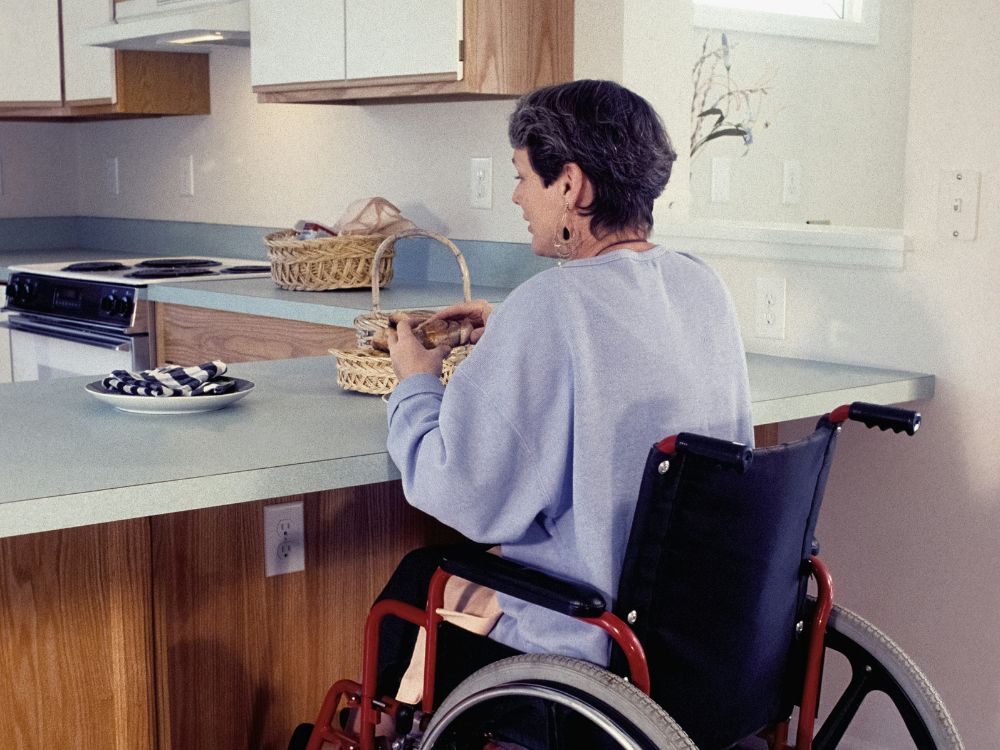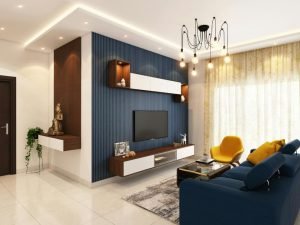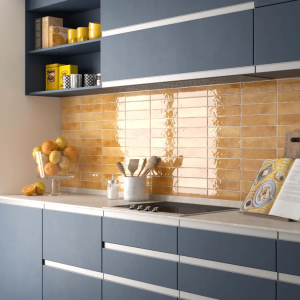Last Updated on September 16, 2024 by teamobn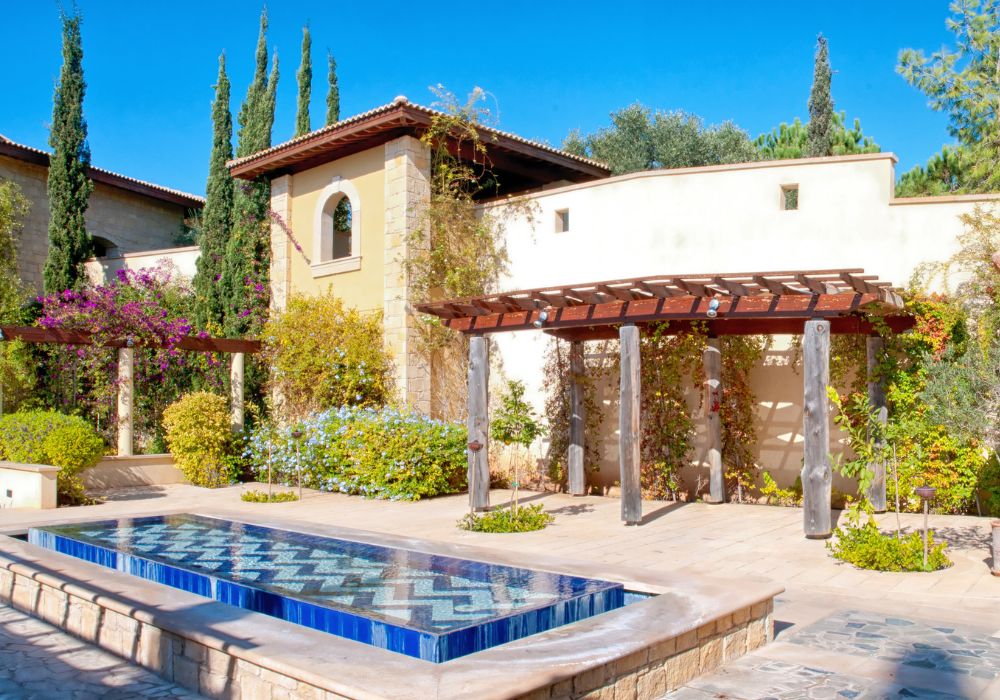
Mediterranean homes marry rustic appeal with sophisticated design features to bring to life the energetic attitude of coastal living. These houses reflect a centuries-old legacy from energetic areas including Spain, Italy, and Greece; they are more than just buildings. From the sun-kissed stucco walls to the recognizable red tiled rooftops, Mediterranean architecture is all about fusing the indoors with the outside to create opulent yet laid-back environments.
This post will examine the classic appeal of Mediterranean homes and explain how their particular characteristics appeal to people looking for a mix of history and natural beauty in their living areas.
Contents
Historical Roots of Mediterranean Architecture
The architectural roots of Mediterranean homes trace back to the regions of Southern Europe and North Africa, where the climate and local materials significantly influenced building designs. Originally, these structures were practical responses to the warm, sunny climates of the Mediterranean coastline.
Over centuries, as different cultures ruled and mingled, such as the Greeks, Romans, and Moors, they left their mark on the architecture, introducing features like open courtyards, intricate tile work, and expansive terraces that have become hallmarks of this style.
During the Renaissance and later periods, these architectural elements evolved further, blending local traditions with the luxurious touches seen in today’s Mediterranean homes.
Features like large windows and balconies to enjoy sea breezes, thick walls to keep interiors cool, and red tiled roofs reflecting the region’s earthy palette became standardized. This architectural style’s adaptability has allowed it to endure and evolve, maintaining its historical essence while embracing modern influences.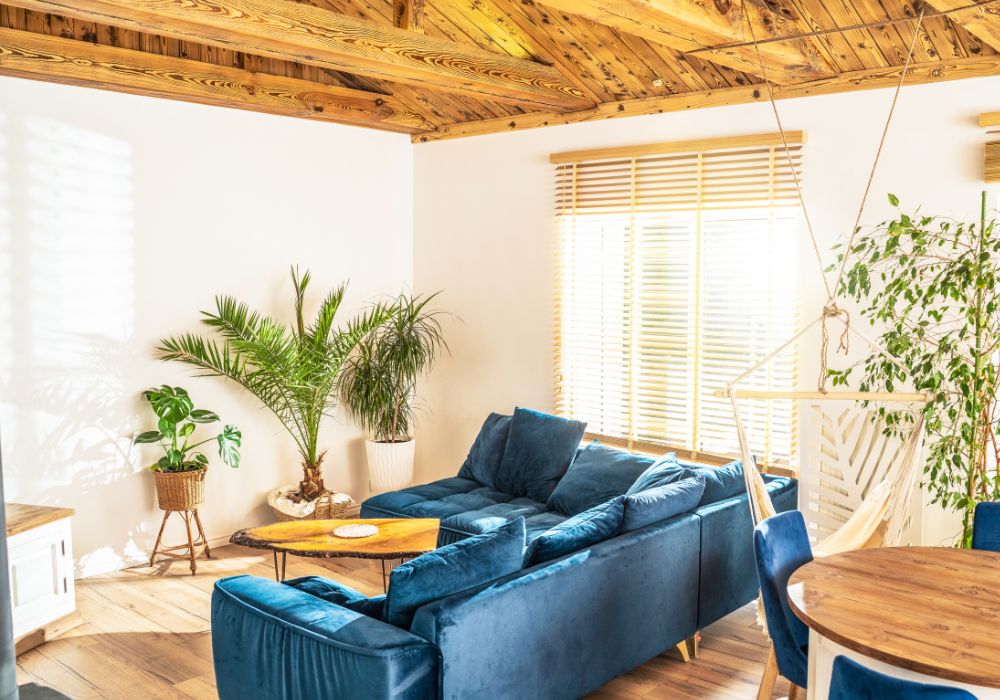
Key Characteristics of Mediterranean Homes
Mediterranean homes are well-known for their unique qualities that combine practicality with beauty. These houses are meant to be elegant and comfortable, yet they also enhance the natural surroundings of warm climates. We go through the main features that define Mediterranean architecture below, stressing how every component adds to the general appeal and usefulness of these buildings.
Stucco Walls and Red-Tiled Roofs
The sun-reflective white or light-colored stucco walls and opposing red clay tiled roofs define Mediterranean homes most famously. Apart from their striking appearance, these components have functional value; the red tiles give durability and resistance against the heat, while the stucco keeps interiors cool by acting as great insulation.
Arches and Curved Doorways
Signature features that give Mediterranean homes a bit of architectural interest and elegance are arched doorways and windows. These gentle contrasts to the angular limits of the rooms reflect classical architecture. They also improve the natural light’s flow into the areas, so producing airy and friendly interiors.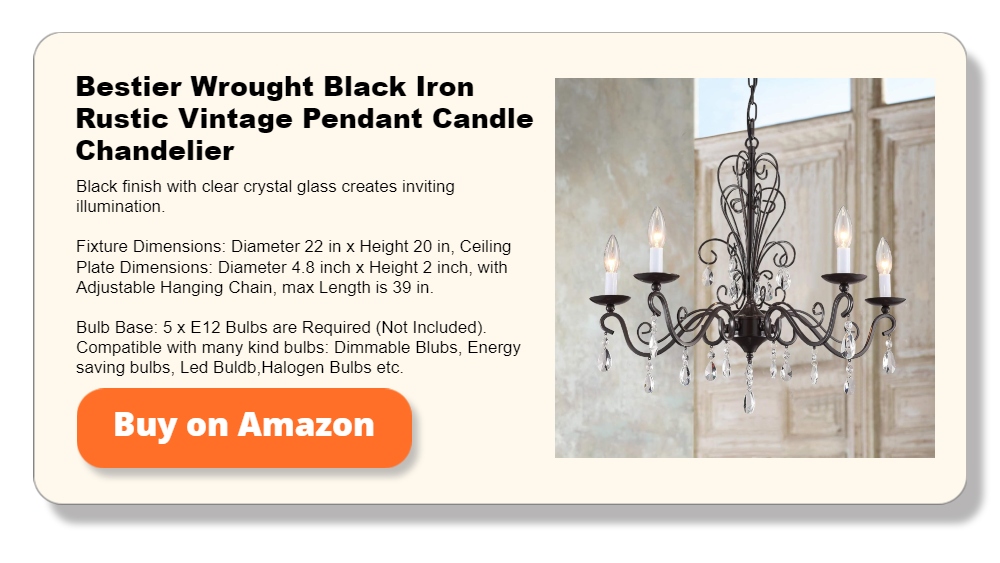
Open Courtyards and Central Gardens
The idea of indoor-outdoor life is fundamental to Mediterranean living. These houses feature open courtyards and rich central gardens, which function as private havens that complement indoor environments. These areas are often decorated with local flora, ornate fountains, and cozy seating.
Use of Natural Materials
Mediterranean homes extensively utilize locally sourced natural materials that enhance their rustic yet elegant charm. Stone, terracotta, and wrought iron are commonly used for both construction and decorative elements. These materials are not only aesthetically pleasing but also highly durable and suitable for the Mediterranean climate.
Tilework and Mosaics
Decorative tilework is another hallmark of Mediterranean design, reflecting Moorish influences that have permeated through the ages. Intricate mosaics and patterned tiles often adorn floors, walls, and even ceilings, adding color and artistic flair to the otherwise neutral tones of the stucco walls.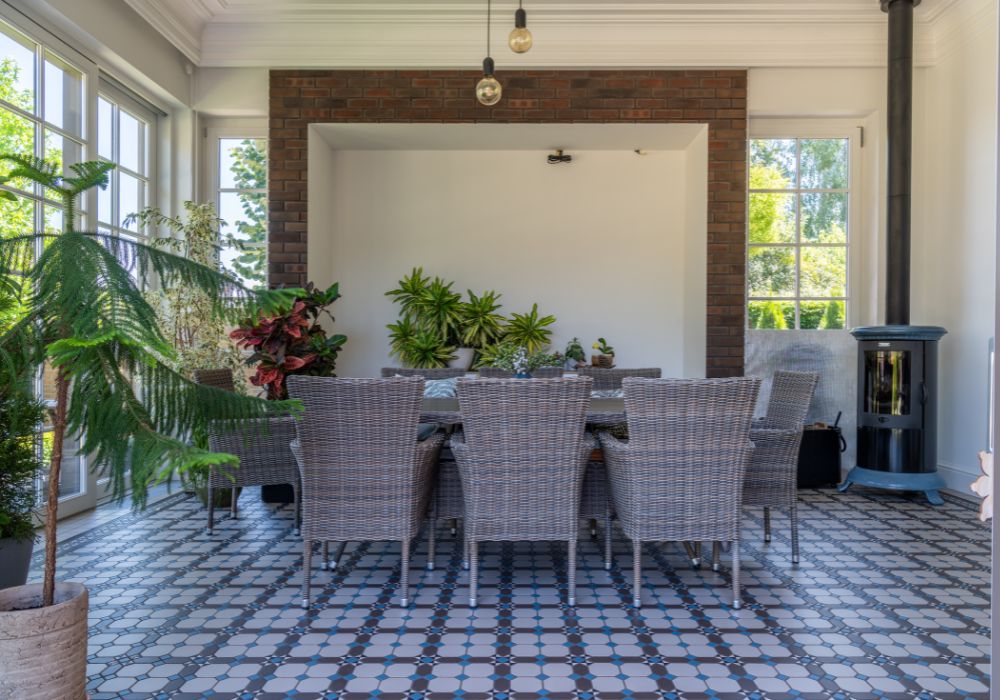
Large Windows and French Doors
Expansive windows and French doors are crucial in Mediterranean architecture, facilitating a seamless flow between indoor and outdoor spaces. These features allow for abundant natural light and air circulation, maintaining a cool and bright interior. Additionally, they offer uninterrupted views of the garden or sea, enhancing the connection to the landscape.
Exposed Wooden Beams
The interiors of Mediterranean homes frequently feature exposed wooden beams, adding a touch of rustic warmth to the ceilings. These beams are not just decorative; they reflect the traditional construction methods of the region and provide structural support to the buildings.
These characteristics of Mediterranean homes reflect a design philosophy that emphasizes comfort, functionality, and a deep connection with the environment. Each element not only serves an aesthetic purpose but also enhances the living experience by embracing the outdoor lifestyle typical of Mediterranean climates.
Design Elements in Mediterranean Homes
Mediterranean homes blend functionality with aesthetic elegance through thoughtful design elements that enhance both their visual appeal and livability. These elements draw from the natural environment and cultural history of the Mediterranean region, creating spaces that are both timeless and comfortably modern. Here’s a closer look at some of the key design elements found in Mediterranean homes.
Earthy Color Palette
Typically with an earthy color palette comprising ochre, terracotta, beige, and rich greens, Mediterranean homes Often accented with vivid blues and yellows to mirror the sea and sun, these colors reflect the natural settings of the Mediterranean coast. This palette accentuates the warm, inviting ambiance of the house in addition to matching the natural building materials.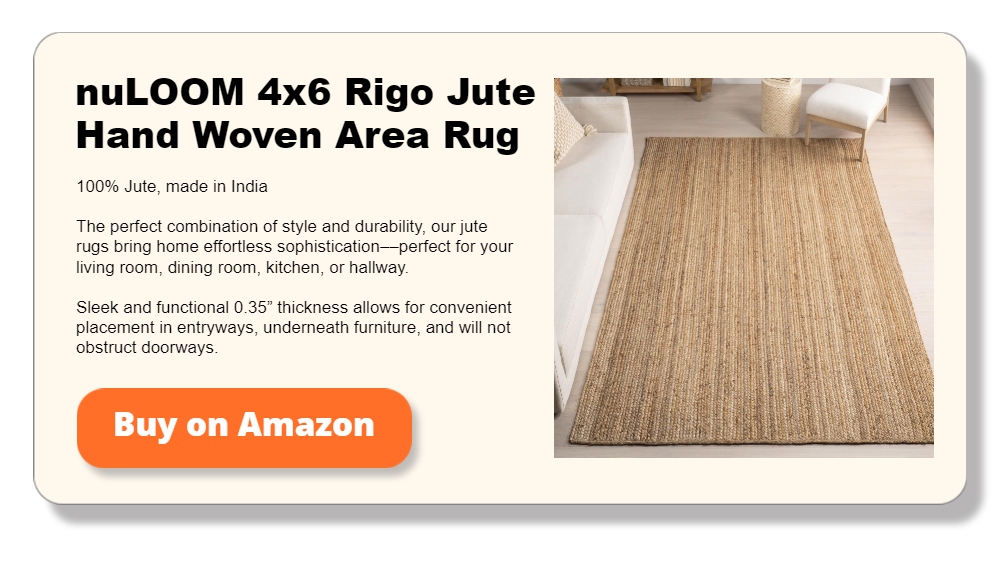
Natural Materials
Mediterranean design emphasizes sustainability and harmony with nature by means of natural materials, hence they are absolutely important. Common floor and wall materials are stone, marble, terra cotta tiles, and hardwood, which also help to keep the interior cool and provide longevity. Door and window grilles, light fittings, and railings all feature wrought iron, which lends strong character and detailed accent.
Importance of Tilework
A major feature of Mediterranean interior design, tilework highlights hand-painted ceramic tiles and finely detailed mosaics. Often used as bathroom walls, kitchen backsplashes, and flooring, these components provide color and pattern into the areas. Apart from their ornamental value, the tiles are useful since they have cooling qualities and simple maintenance.
Textiles and Upholstery
Textiles in Mediterranean homes are chosen for comfort and aesthetic appeal. Heavy, textured fabrics are used for drapes to control the light and heat, while softer, lighter textiles might be used for upholstery, cushions, and throws. These fabrics often feature patterns and colors that echo the home’s overall color scheme, enhancing the cohesive, curated look of the interiors.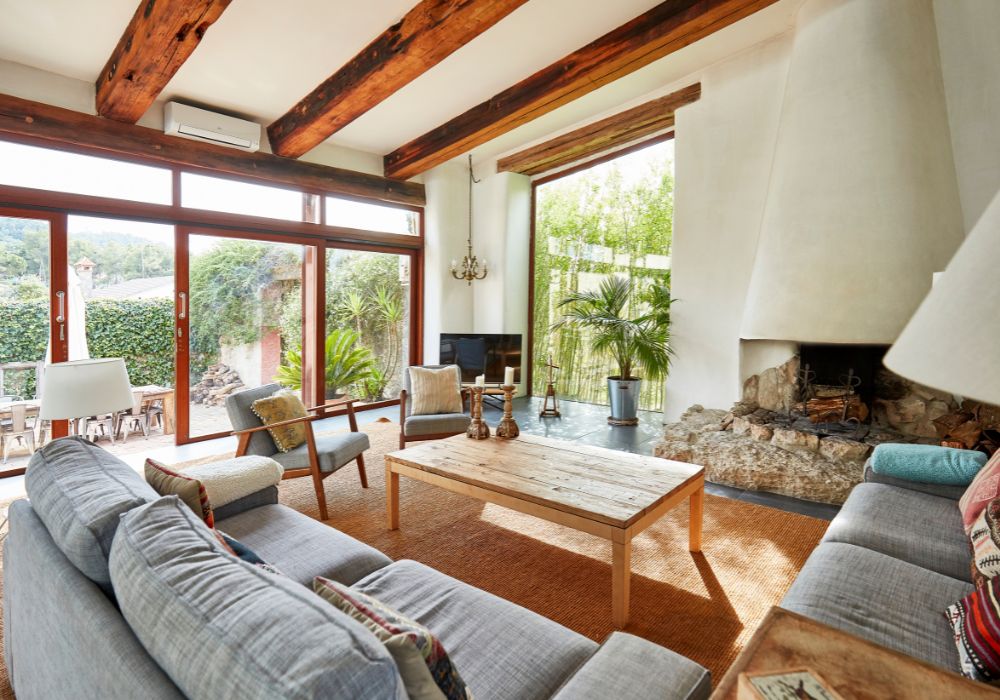
Open Layouts
Open, flowing layouts are fundamental in Mediterranean homes, promoting a seamless transition between different living spaces. This design philosophy supports family interactions and entertaining guests, with kitchens opening into dining areas and living rooms leading to outdoor spaces. The open layouts also allow natural light to permeate throughout the home, making the spaces feel larger and more inviting.
These design elements are integral to creating the distinctive Mediterranean aesthetic, characterized by a blend of tradition and natural beauty that makes these homes not only beautiful but also immensely practical for everyday living.
Mediterranean Landscaping and Outdoor Spaces
Reflecting the history of the area of mixing indoor and outdoor living, Mediterranean landscaping and outdoor areas are fundamental components of the whole design. Designed with great care to maximize comfort, utility, and beauty, these areas represent a way of life honoring the outdoors.
The main features of Mediterranean landscaping are examined here, together with how these areas are included in house plans.
Indoor-Outdoor Connectivity
The flawless connection between indoor and outdoor areas is among the most unique aspects of Mediterranean homes. Large French doors or retractable glass panels opening to gardens, courtyards, or patios help to often accomplish this. Perfect for climates where warm, sunny days are the norm, this design lets living areas extend into the outdoors.
Central Courtyards
A classic component of Mediterranean architecture, central courtyards form the heart of the house. Many times featuring a water feature—such as a fountain or pond—these courtyards provide a soothing touch and assist to cool the surrounding air. Nestled amid loggias or arcades, these courtyards offer a private, covered outdoor area for social events and leisure.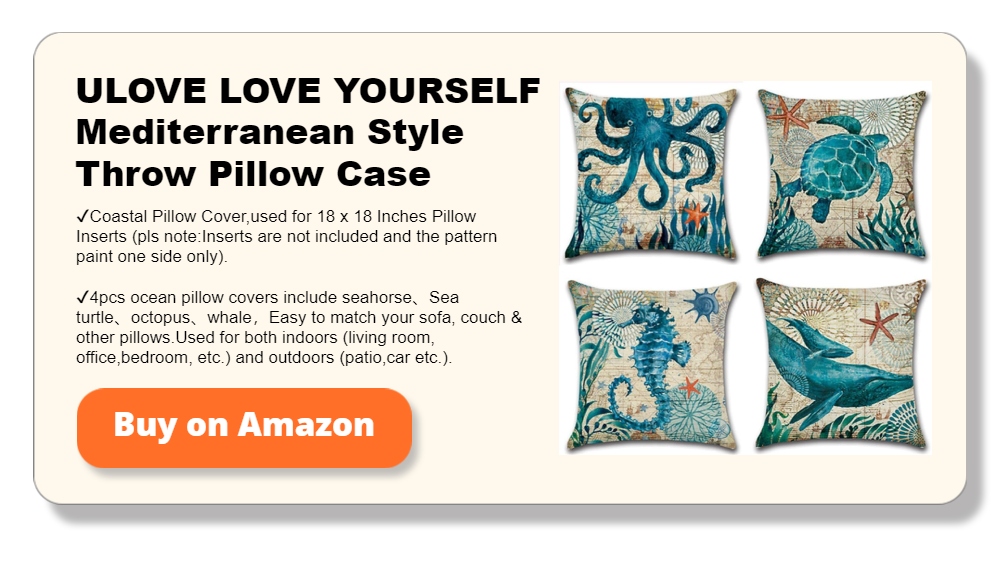
Native Planting
Drought-tolerant landscaping featuring native species that flourish in hot, dry conditions defines Mediterranean gardens. Commonly used aromatic herbs including olive trees, lavender, sage, rosemary, and others add both beauty and utility. These low irrigation plants make the garden low maintenance and sustainable.
Use of Terracotta and Stone
Mediterranean outdoor environments often feature stone and terracotta as main materials. While stone paths and walls give the landscape structural integrity and texture, terracotta pots, tiles, and decorative accents help to preserve the rustic appeal. These materials not only fit the surroundings naturally but also assist control moisture and temperature of the ground.
Outdoor Living Features
Designed for leisure and entertainment, Mediterranean homes incorporate outdoor kitchens, patios, and pergolas, qualities that define their character. While outdoor kitchens with grills and pizza ovens allow a means to enjoy cooking and dining outside, pergolas covered in vines offer shade and a natural dining or lounging area.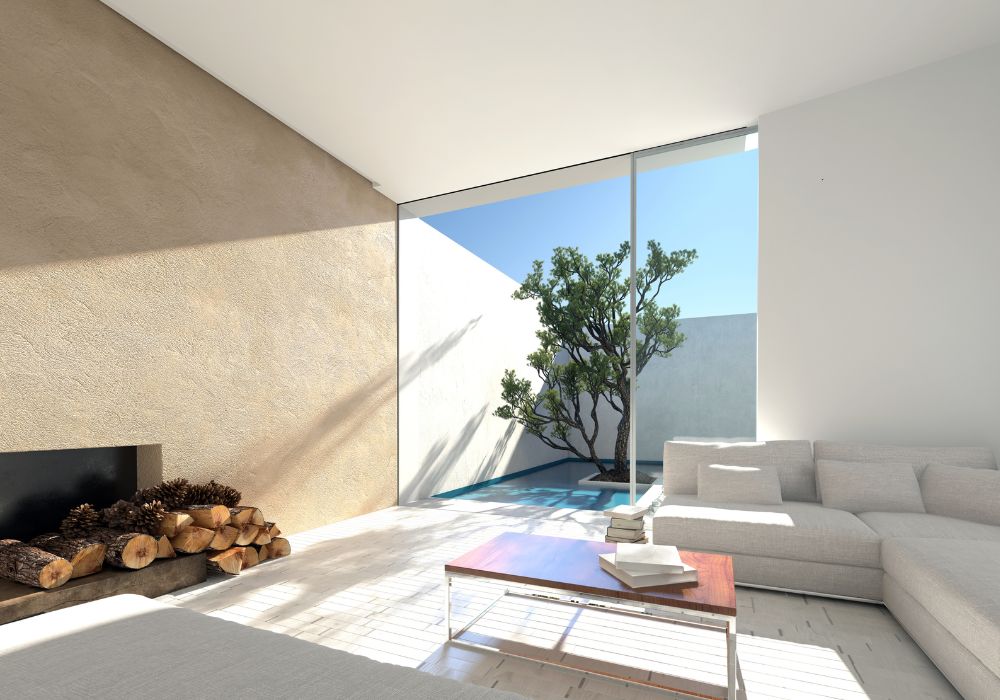
Mediterranean homes are not only homes but also retreats honoring the rich cultural legacy and natural beauty of the area thanks in great part to these landscaping and outdoor elements. Their harmonic whole, which combines architecture and nature, is meant to improve quality of life.
Interiors of Mediterranean Homes
Mediterranean homes’ interiors are meant to mirror the light, warmth, and laid-back elegance of the coastal areas from which inspiration comes. Emphasizing comfort and utility, these interiors feature classic pieces modified for contemporary living. The unique qualities and design issues defining Mediterranean homes’ interiors are examined below.
Open and Airy Layouts
Open, airy designs of Mediterranean interiors are well-known for improving the natural light and air flow across the house. While archways between rooms keep an open line of sight across many areas, so promoting a sense of connectivity and spaciousness, high ceilings and big, open spaces help to prevent the interiors from feeling confined.
Natural Light
Mediterranean interior design mostly depends on maximizing natural light. Usually arched or rounded at the top, huge windows are a must since they let sunlight flood the spaces and accentuate the natural materials used in the décor. Reflective surfaces like white-painted walls or polished stone accentuate the light, so rendering the space brilliant and friendly.
Earthy Materials and Textures
The Mediterranean style revolves mostly on the use of natural materials. Common materials seen in floors, walls, and ceilings are stone, wood, and terracotta, which offers a robust, rustic look that ties the indoors to the natural surroundings. Typical elements adding character and warmth to the room are exposed wooden beams and stone fireplaces.
Colorful Accents and Artwork
Although a Mediterranean house usually has a neutral and earthy color scheme, vivid accents are used to give the space life and personality. Everywhere you look for contrasts to the subdued base tones are vibrant tiles, fabrics, and artwork. These components add historical richness by frequently featuring patterns and motifs inspired by ancient Mediterranean civilizations.
Functional Yet Decorative Furniture
Mediterranean homes’ furniture is selected for visual appeal as much as comfort. Often built from natural materials like wrought iron and wood, pieces stress sturdiness and workmanship. While decorative accents like carvings and metalwork reflect the Mediterranean artisanal traditions, upholstery in natural fibers adds comfort and invites relaxation.
Together, these interior design features produce a Mediterranean house that is not only aesthetically beautiful but also practical and comfortable, ideal for family life and entertaining.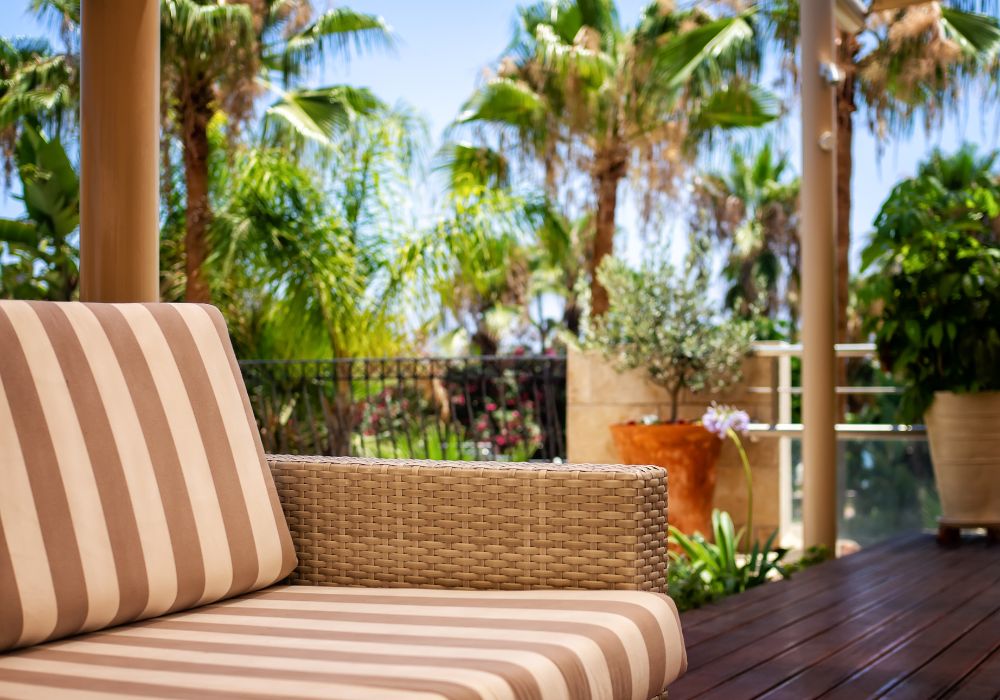
Modern Adaptations of Mediterranean Architecture
Mediterranean architecture, with its origins steeped in history and culture, continues to evolve, adapting to modern tastes and technological advancements while retaining its classic appeal. This style, known for its rustic charm and emphasis on indoor-outdoor living, is increasingly incorporating contemporary elements that enhance functionality and environmental sustainability.
This section explores how modern adaptations are reshaping Mediterranean architecture, making it relevant and appealing for today’s homeowners.
Incorporating Contemporary Design Elements
Modern Mediterranean homes are embracing more minimalist design cues, which contrast with the traditionally ornate and detailed aesthetics. Clean lines and simplified forms are becoming more prevalent, allowing the classic elements like arched doorways and tiled roofs to stand out without overwhelming the design. This blend of old and new creates a visually appealing balance that appeals to a wider range of tastes.
Advanced Materials and Construction Techniques
While traditional Mediterranean homes rely heavily on stone and wood, modern versions are incorporating advanced materials that offer better durability and energy efficiency. For example, the use of reinforced concrete and advanced insulation materials helps maintain the home’s internal temperature, reducing the need for artificial heating and cooling. Similarly, modern synthetic stucco offers greater resilience and maintenance ease compared to traditional plaster.
Sustainable Features
Sustainability is a significant focus in the modern adaptation of Mediterranean architecture. Features like solar panels, rainwater harvesting systems, and green roofs are being integrated to reduce the home’s environmental impact. These features not only support sustainable living but also provide cost savings over time. Energy-efficient windows and doors, along with better insulation techniques, are common updates that enhance the home’s comfort and eco-friendliness.
Open and Flexible Floor Plans
Modern Mediterranean homes often feature more open and flexible floor plans than their traditional counterparts. This adaptation suits the contemporary lifestyle, which favors fewer barriers between cooking, dining, and living areas. Larger, more versatile spaces allow residents to customize their homes to their changing needs, such as creating home offices or workout areas, reflecting the modern emphasis on adaptability and personalization.
Technology Integration
Smart home technology is becoming a staple in modern Mediterranean homes, with systems designed to improve convenience, safety, and efficiency. Automated climate control, security systems, and smart lighting are seamlessly integrated into these homes, enhancing the living experience while maintaining the aesthetic integrity of the Mediterranean style. This technology also helps manage the indoor-outdoor living features, like controlling water features or landscape lighting, with ease.
Revamped Outdoor Living Areas
The traditional Mediterranean focus on outdoor living continues, but with modern enhancements that extend usability and comfort. Contemporary outdoor spaces are equipped with modern amenities like fully equipped outdoor kitchens, fire pits, and sophisticated patio furniture. These areas are designed to be used year-round, with additions like retractable covers, heating, and advanced lighting solutions.
Interior Design Updates
Inside modern Mediterranean homes, interior design has evolved to incorporate a broader palette and a mix of textures. While the traditional color schemes remain popular, they are often complemented by bolder, contemporary colors and patterns.
Modern furniture designs that lean towards the mid-century or minimalist can be found in these settings, providing comfort without sacrificing style. Additionally, art and decor tend to blend traditional Mediterranean elements with modern abstract pieces, creating a unique and personalized interior landscape.
These adaptations make Mediterranean architecture more than just a historical style; they transform it into a dynamic, evolving form that resonates with today’s architectural trends and lifestyle demands. By blending timeless elements with modern innovations, these homes offer the best of both worlds: classic beauty and contemporary comfort.
Conclusion
For those who value a mix of the old and the new, Mediterranean homes appeal for their special mix of historical elegance and contemporary utility. Along with contemporary adaptations including sustainable materials and smart technology, the design incorporates rustic elements including stucco walls and red-tiled rooftops. These houses maximize natural light by means of open layouts and rich landscaping, so providing a flawless indoor-outdoor living environment. Mediterranean architecture’s ongoing appeal stems from its capacity to offer a pleasant, aesthetically pleasing space that fits well for many types of living.
We have more guide to boosting the aesthetic of your home. Check out our home design element guide!


